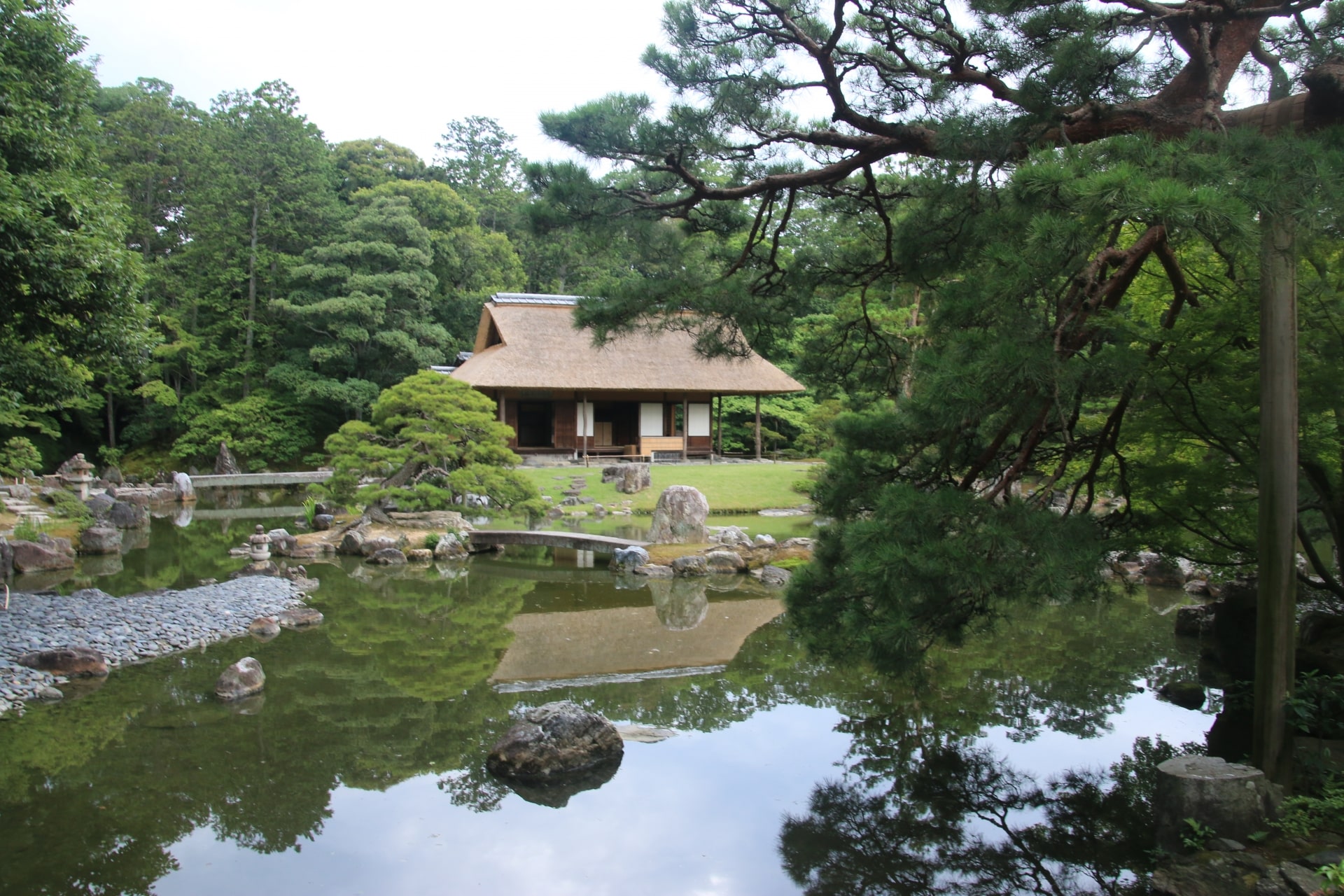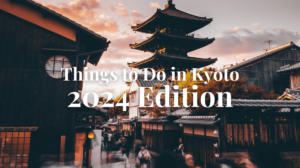Katsura Imperial Villa, Kyoto’s Timeless Elegance
Guide to Katsura Imperial Villa

Katsura Imperial Villa in Kyoto‘s western suburbs is a masterclass in Japan’s architectural and garden design. Constructed during the early Edo period, this villa is renowned for its exquisite combination of natural scenery and meticulous craftsmanship. Walking here is like a journey through time, exploring elegant tea houses, intricately landscaped gardens, and quiet pathways that reflect the profound aesthetic sensibilities of the era.
Conceived as a poetic tribute to Murasaki Shikibu, author of one of the first novels in the world, the villa’s every detail has been thoughtfully arranged to enhance the contemplative experience of visitors, as the area was already a popular location for the nobility’s villas. A visit to Katsura Imperial Villa reveals the refined elegance and timeless beauty that define Japanese artistry.
See also: Kyoto Imperial Palace: The Heart of Kyoto’s Ancient Traditions & Shugakuin Imperial Villa, Kyoto’s Hidden Aristocratic Retreat
What is Katsura Imperial Villa?

The main structures within the villa include the Shoin, Chumon, and several tea houses like Shokin-tei and Shoiken. These buildings are crafted using traditional materials such as wood, bamboo, and paper, following the Edo period’s architectural style. The villa’s interior features tatami-matted rooms, sliding shoji screens, and subtle decorations, aiming to create an atmosphere of understated elegance.

The villa’s tea houses serve as tranquil retreats within the garden, each with a unique design that complements its natural surroundings. These tea houses were used for the tea ceremony, a practice that underscores the villa’s historical and cultural importance. The garden and buildings together create a cohesive experience that reflects Japan’s deep appreciation for nature aesthetics, artistry, and tradition.
What to See and Do at Katsura Imperial Villa

Visiting Katsura Imperial Villa requires an advance reservation, as entry is strictly limited to guided tours to preserve its pristine condition. These tours are available in English and Japanese, and provide insightful commentary on the villa’s history, architecture, and garden design. As of this article’s writing, the daily time slots for English tours are: 9:20 / 11:20 / 13:20 / 15:20 / 16:20. You can apply for tours in this link.
You can also try your luck going early in the morning for a same-day ticket, but these are limited and are distributed on-site on a first-come-first-serve basis starting at 8:40. In any case, once you get in, these are the highlights awaiting you:
- Strolling Garden: A beautifully landscaped garden featuring a large pond, carefully placed rocks, and various plantings that reflect the changing seasons.
- Geppa-ro Pavilion: A charming structure offering stunning views of the garden and the moon (Geppa means moon viewing).
- Shoiken Teahouse: One of the villa’s main tea houses, designed to offer a perfect view of the garden.
- Miyukimon Gate: The main entrance gate, showcasing intricate craftsmanship.
- Shokin-tei Pavilion: A unique teahouse known for its elegant simplicity and use of natural materials.
How to Get to Katsura Imperial Villa
Map
Access
The closest train station is Katsura, on the Hankyu-Kyoto Line or the Hankyu-Arashiyama Line. The villa is about 15 minutes walk from the station. Alternatively, the bus stop Katsurarikyu-mae is closer, just 6 minutes on foot from the villa, and reachable via bus lines T33 City Bus, National Highway bus 2, or Katsura 26.
If walking is difficult, it’s better to avoid private vehicles due to limited parking facilities and opt for a taxi instead.
Address
Katsuramisono, Nishikyo Ward, Kyoto, 615-8014
Business Hours
9:00 – 17:00 (Closed on Mondays and Tuesdays)
Price
Admission fee 1,000 yen (18 years and older)
Official Website
https://kyoto-gosho.kunaicho.go.jp/en/katsura-rikyu
Tourist Reviews of Katsura Imperial Villa
Katsura Imperial Villa in Kyoto, renowned for its architectural elegance and landscaped gardens, holds a solid reputation among visitors. With a Google rating of 4.5 (2,037 reviews), TripAdvisor score of 4.5 (490 reviews), and Trip.com score of 4.4 (41 reviews), it consistently garners praise for its atmosphere and attention to detail.
A reviewer was captivated by the thoughtfulness embedded in the villa’s design and enjoyed the intimacy of the guided experience:
“I highly recommend the visit to the villa. We went on an English-speaking tour (the only way available), which was rather intimate – only 12 people at the entire villa, huge contrast to all the other Kyoto sites. The villa is exquisite, with every detail thought through (e.g., the entrance path ends with a large tree obscuring the view, so that the visitors do not get to experience the view of the pond prematurely). The guide pointed out and explained all of these details and spoke very good English.”
―from TripAdvisor
Another visitor emphasized the practicality of joining a tour and highlighted the convenience of public transportation:
“Beautiful courtyard; it is recommended to join an English tour group (a few times a day) and apply online before visiting to ensure you have a place on your trip. The tour is informative, and the garden is beautiful. Take the city bus from Kyoto Station. The bus will have relevant information to get you off at the correct bus stop. Katsura Imperial Villa is very close to the bus stop.”
―from Trip.com
Visitors often remark on the villa’s quiet charm and the immersive experience of the guided tours, which allow for a deeper appreciation of the villa’s rich historical and aesthetic significance.
Tourist Attractions Near Katsura Imperial Villa
Exploring the area around Katsura Imperial Villa offers additional cultural and historical experiences. Here are some nearby attractions worth visiting:
1. Toji Temple

The temple complex includes several historic buildings, beautiful gardens, and an extensive collection of Buddhist statues and artifacts. Don’t miss the monthly flea market, held on the 21st, for a chance to see interesting antiques, crafts, and traditional foods.
2. Jizoin Temple (Take-no-tera)

Established in 1367, this Zen temple features beautiful gardens designed to complement the natural landscape, with pathways winding through bamboo forests and traditional stone lanterns dotting the grounds. The main hall, surrounded by vibrant greenery, houses a revered statue of Jizo Bosatsu, the guardian of children and travelers.
3. Saihoji Temple

More info: Moss Garden at Saihoji Temple, Kyoto
4. Kyoto Railway Museum

▽Subscribe to our free news magazine!▽
For more information about landmarks and traveling in Japan, check these articles below, too!
▽Related Articles▽
▼Editor’s Picks▼
Written by
Photographer, journalist, and avid urban cyclist, making sense of Japan since 2017. I was born in Caracas and lived for 14 years in Barcelona before moving to Tokyo. Currently working towards my goal of visiting every prefecture in Japan, I hope to share with readers the everlasting joy of discovery and the neverending urge to keep exploring.














